Overview
Dynamic pricing is super important for eCommerce success! It lets businesses tweak their prices in real-time based on things like demand, competition, and what customers are up to. This approach not only helps maximize revenue but also boosts customer satisfaction. Have you ever thought about how often prices change when you're shopping online?
The article highlights that to really nail dynamic pricing, businesses need to gather relevant data, set clear goals, understand their customer segments, choose the right pricing models, and keep an eye on their strategies. It’s all about staying competitive in the ever-changing digital marketplace. So, are you ready to dive into the world of dynamic pricing and see how it can transform your business?
Introduction
Dynamic pricing has become a key strategy for eCommerce businesses looking to stand out in a crowded marketplace. Imagine being able to tweak your prices on the fly based on what’s happening in the market or how customers are behaving—that’s the power of dynamic pricing! It not only helps retailers boost their revenue but also keeps customers happy.
But here’s the catch: as companies dive into this flexible pricing game, they face some tricky ethical questions and must consider how consumers perceive these changes.
So, how can businesses make dynamic pricing work for them while also building trust and loyalty with their customers? Let’s explore this together!
Define Dynamic Pricing and Its Importance
Dynamic cost adjustment is a smart way to tweak prices on the fly based on various factors like demand, competition, and consumer behavior. This approach is super important for maximizing revenue and staying competitive in the fast-paced eCommerce world of 2025, particularly through the implementation of dynamic pricing in ecommerce. When businesses align their prices with what’s happening in the market, they not only but also create a sense of transparency and fairness that consumers really appreciate. Did you know that time-based cost methods can ramp up product demand by 20%? That’s a great example of how flexible financial strategies can drive sales.
Sectors like travel and retail have really nailed this flexible pricing thing. Take airlines, for instance. They use flexible fare algorithms to adjust ticket prices based on real-time demand, ensuring they fill seats while maximizing revenue. Uber does something similar by raising prices during peak times, like when it’s raining, to match the surge in demand for rides. Retailers can also jump on the flexible pricing bandwagon by offering markdowns to clear out seasonal stock or react to competitor pricing, which ultimately boosts sales and helps move inventory.
Overall, dynamic pricing in ecommerce serves as a flexible cost strategy that helps companies grab value while also creating a more adaptable and customer-friendly shopping experience. As Stephen Beer points out, these strategies have become essential for retailers looking to stay competitive in today’s digital marketplace. However, it’s crucial for companies to handle the ethical side of flexible pricing carefully to keep consumer trust intact and avoid any backlash. Clear communication about how flexible pricing works is key to gaining consumer approval, ensuring that clients feel valued and informed about price changes. This makes dynamic pricing in ecommerce an essential tactic for online sellers who are aiming for success in today’s competitive landscape.
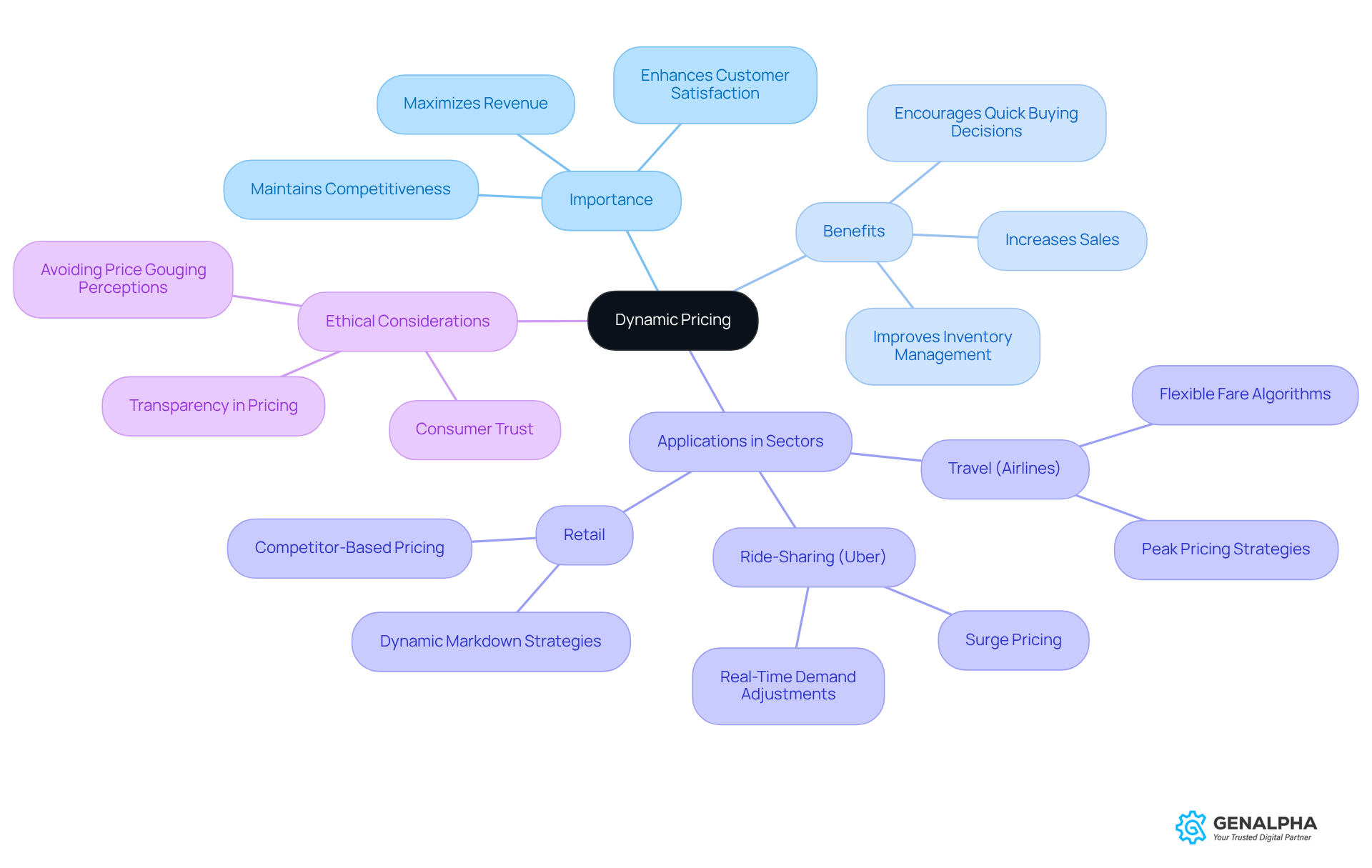
Collect and Analyze Relevant Data
Recognizing important data sources is key to managing costs effectively. Have you ever thought about how retailers utilize dynamic pricing in ecommerce to maintain competitive prices? It all starts with gathering crucial information like sales data, consumer behavior insights, and competitor pricing. By using advanced tools and software that automate data collection and analysis, businesses can utilize dynamic pricing in ecommerce to gain quick insights and respond swiftly to market changes.
For example, think about how retailers leverage machine learning algorithms. They dive deep into sales data, consumer habits, and industry trends to develop flexible pricing strategies that utilize dynamic pricing in ecommerce. It’s fascinating how historical sales data can reveal trends and patterns that shape these strategies. This enables retailers to utilize dynamic pricing in ecommerce to and market demands.
But here’s the thing: keeping this data updated is essential. Regular updates reflect current economic conditions and shifting consumer preferences, ensuring that cost strategies remain relevant and competitive. However, companies should also be mindful of the potential risks associated with dynamic cost strategies. For instance, how do consumers perceive fairness in pricing? This perception can significantly impact client trust and loyalty.
So, as we think about cost management, let’s remember the importance of data, adaptability, and consumer perceptions. How are you planning to leverage data in your own cost strategies?
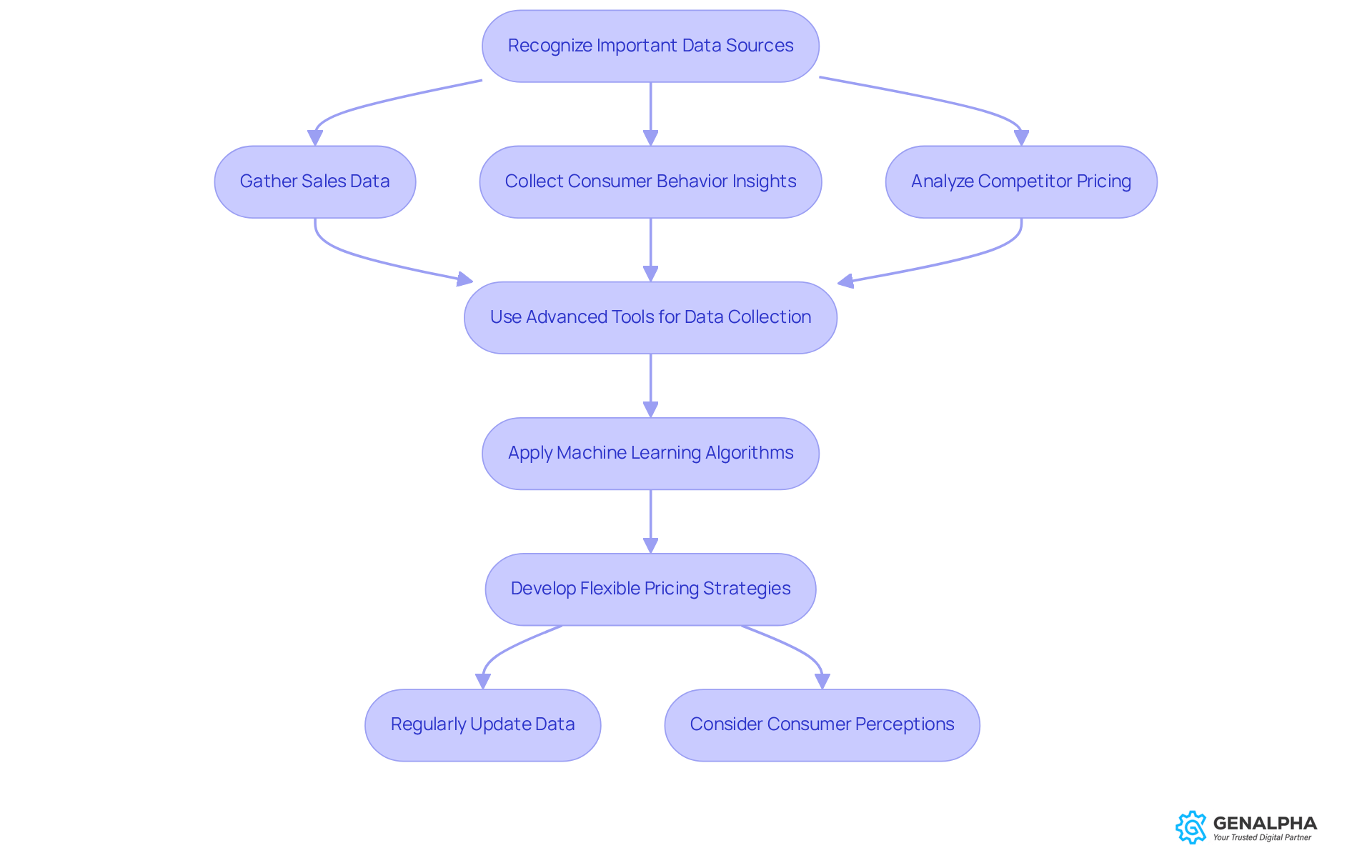
Set Clear Business Objectives for Pricing Strategy
Let's talk about setting clear financial goals. Whether it’s maximizing profit margins, boosting your brand’s presence, or improving customer loyalty, these objectives are what guide your strategies and procedures. Have you thought about how to measure these goals? It’s crucial to ensure that your cost objectives are not only measurable but also time-bound. This way, you can track your progress and make adjustments as needed.
Now, think about how your cost strategies align with your overall business objectives. It’s all about creating a cohesive approach to market positioning, right? And don’t forget to adapt your strategies based on market conditions as necessary.
You might find it insightful to incorporate perspectives from experts like Warren Buffett, who stresses the . Then there’s Damon Richards, who points out the value of fairness in charges. These insights really reinforce why these objectives matter.
Lastly, it’s essential to communicate these goals clearly across your organization. This ensures that everyone is on the same page, fostering a unified effort towards achieving those common goals. So, how are you planning to share your objectives with your team?
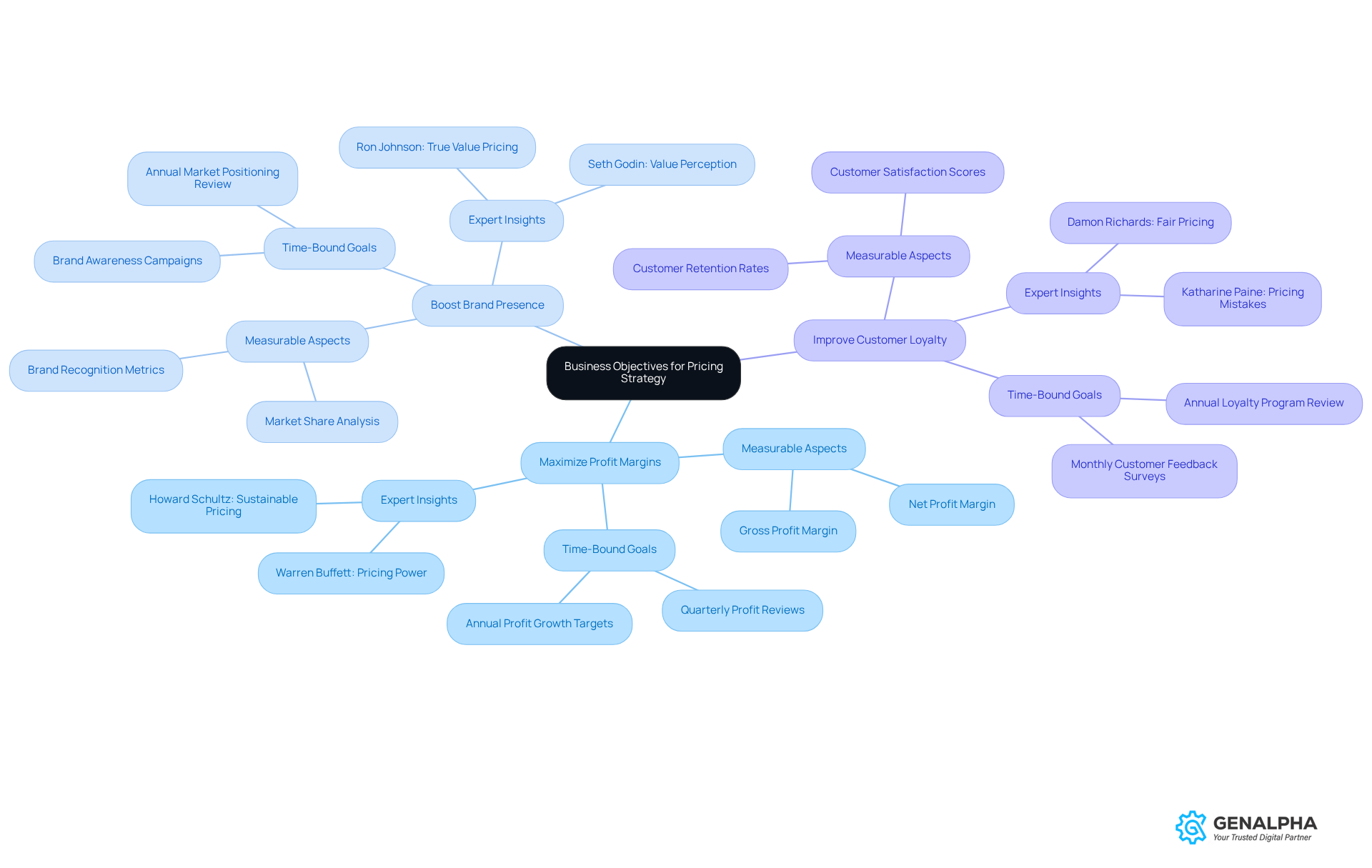
Identify Customer Segments and Product Attributes
Let's talk about how to segment your clients effectively! Start by looking at their demographics, buying behaviors, and price sensitivity. This way, you can tailor cost strategies that truly resonate with each group. For instance, think about how younger consumers might prioritize brand reputation, while older folks often focus more on product quality. Understanding these nuances can really help you make .
Next, it's crucial to identify the key product attributes that sway buyers' purchasing decisions. Quality, brand reputation, and unique features are all significant factors. Research shows that consumers are often willing to pay a premium for products they perceive as high-quality or from trusted brands. So, keep that in mind!
Don't forget to utilize client feedback and market research to continuously refine your segmentation and attribute identification processes. Engaging with clients through surveys or focus groups can provide valuable insights into their preferences and perceptions. Have you ever considered how much you can learn just by asking?
Now, let’s develop cost strategies that cater to the specific needs and preferences of each segment. For example, offering tailored discounts to loyal customers can enhance their experience and foster lasting loyalty. Plus, dynamic pricing in ecommerce, which includes flexible rates that adjust according to immediate demand and stock levels, can really make a difference.
Transparency is key! Make sure your clients understand how prices are determined and why they fluctuate. This clarity is essential for building trust and loyalty, especially in today’s fluctuating market.
Also, it’s important to think about the ethical implications of variable rates. We want to avoid discriminatory practices and ensure customer satisfaction. This approach not only encourages loyalty but also aligns with best practices in cost strategies.
Finally, keep an eye on your cost strategies and modify them based on performance indicators and industry conditions. This iterative process helps businesses stay flexible and responsive to changing consumer behaviors and market trends, ensuring you remain competitive in the dynamic pricing in ecommerce landscape. So, are you ready to adapt and thrive?

Choose Suitable Pricing Models and Tools
Let’s dive into some models of dynamic pricing in ecommerce that you might want to consider! Consider strategies related to time, demand, and competitors in the context of dynamic pricing in ecommerce. Each has its own flavor and can really impact your approach to dynamic pricing in ecommerce.
Now, when it comes to cost management tools, it’s crucial to choose ones that fit seamlessly with what you already have. Look for tools that offer real-time data analysis capabilities. This way, you’re always in the loop!
And don’t forget about user experience! A user-friendly interface can make all the difference, so check out the support services offered when selecting your cost management software.
Finally, why not test out different models and tools? This hands-on approach will help you discover . What do you think? Ready to explore these options?
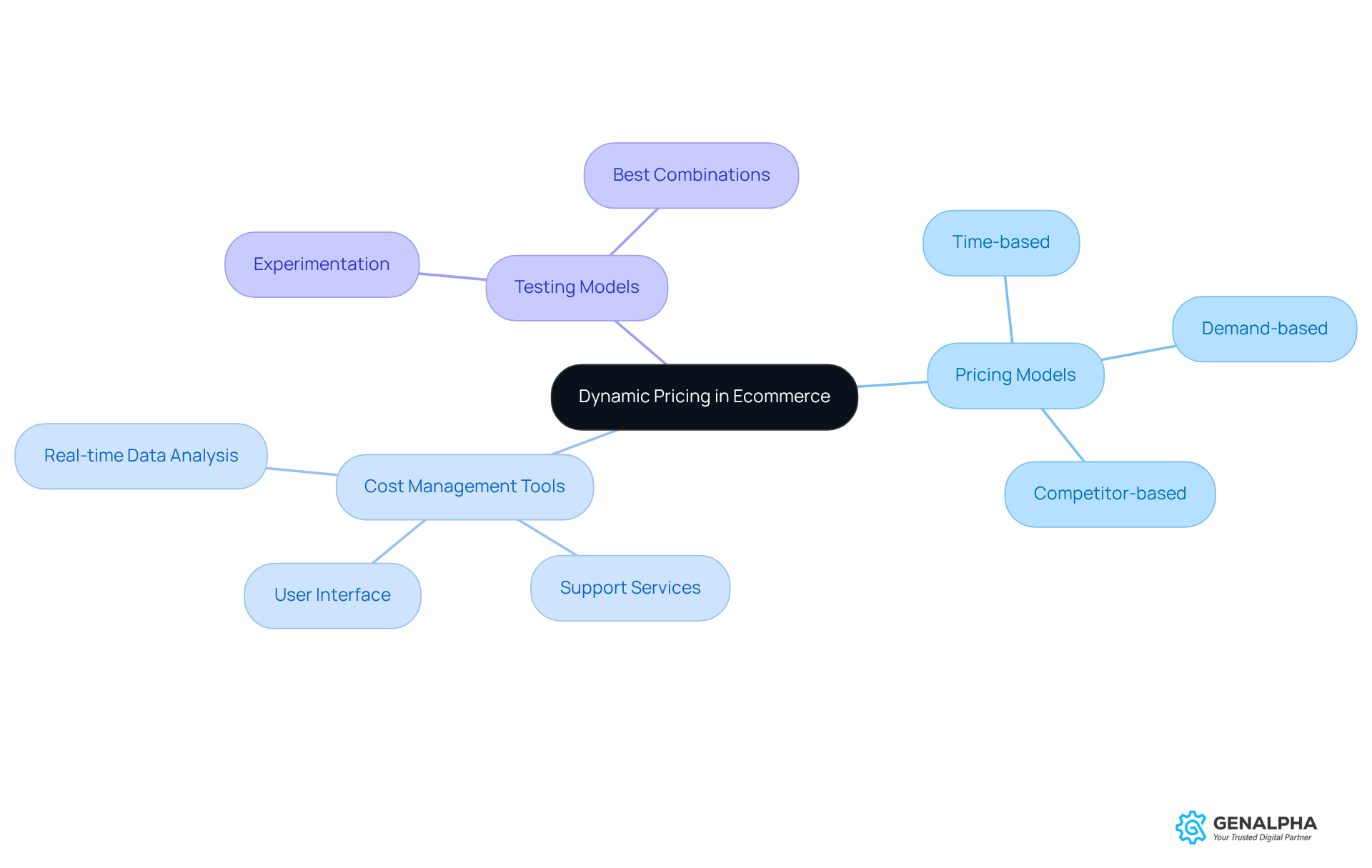
Monitor and Adjust Pricing Strategy Continuously
- Let's kick things off by establishing some key performance indicators (KPIs) to see how effective our cost strategies really are. For instance, the Won Opportunities to Lost Opportunities Ratio can give us a clear picture of how well our price adjustments are working.
- It's also super important to consistently assess cost information alongside consumer input. This helps us spot opportunities for improvement and keeps our strategies aligned with what the industry demands and what our clients expect.
- Staying flexible is key! We need to be ready to as the industry changes, competitors make moves, and customer behaviors evolve. These dynamic adjustments related to dynamic pricing in ecommerce can really impact our sales volume and profitability.
- Let’s cultivate a culture of continuous improvement within our organization. Encouraging teams to adapt swiftly to changing market conditions and leverage insights from data analytics can lead to more informed decision-making.
- And don’t forget about utilizing real-time data and analytics tools! Monitoring pricing performance allows for proactive adjustments, which can lead to a revenue uplift of 5-10% and margin improvements of 7-15% for clients who effectively implement these strategies.
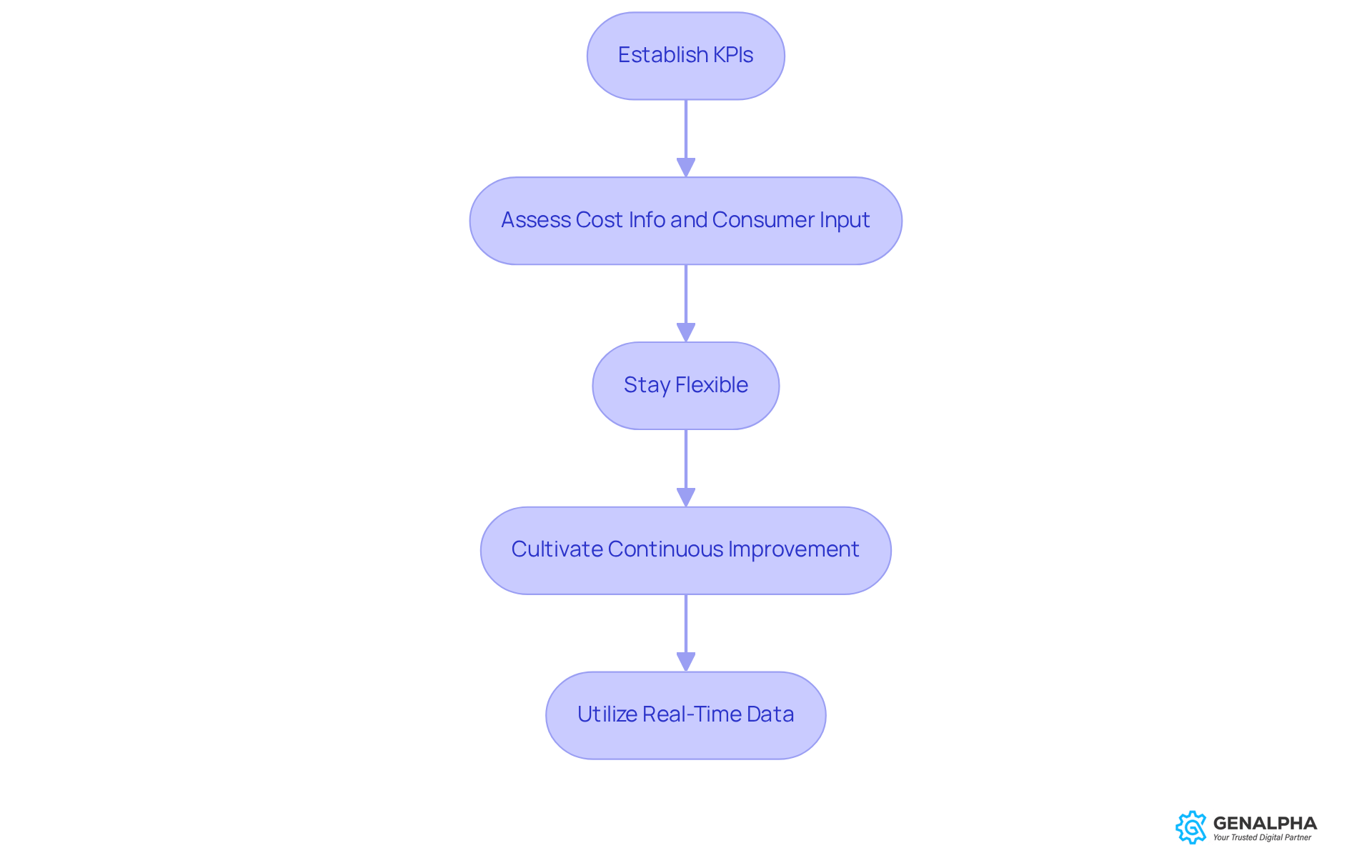
Conclusion
Dynamic pricing in ecommerce is a game changer for businesses looking to stand out in a crowded market. Imagine adjusting your prices in real-time based on what customers want, what your competitors are doing, and how people are behaving online. This not only helps you boost revenue but also makes your customers happier. After all, who doesn’t appreciate a fair and transparent shopping experience? That’s what today’s consumers are looking for in the digital marketplace.
So, how do you get started with dynamic pricing? First off, it’s all about gathering and analyzing data. You need to:
- Set clear business goals
- Understand your different customer segments
- Choose the right pricing models
- Keep an eye on your strategies to make adjustments as needed
Each of these steps is vital in crafting a pricing strategy that’s responsive to market trends and what consumers expect.
But remember, embracing dynamic pricing isn’t just about tweaking numbers; it’s about creating a customer-first mindset that values transparency and fairness. Businesses should tap into data-driven insights to keep refining their pricing strategies. This way, you not only stay competitive but also build strong, lasting relationships with your customers, paving the way for long-term success in the ever-changing world of ecommerce. So, are you ready to take your pricing strategy to the next level?
Frequently Asked Questions
What is dynamic pricing and why is it important?
Dynamic pricing is a strategy that adjusts prices in real-time based on factors like demand, competition, and consumer behavior. It is important for maximizing revenue and maintaining competitiveness in the fast-paced eCommerce environment, particularly in 2025.
How does dynamic pricing enhance customer satisfaction?
By aligning prices with market conditions, dynamic pricing boosts customer satisfaction and creates a sense of transparency and fairness, which consumers appreciate.
Can you provide an example of how dynamic pricing can increase demand?
Time-based pricing methods can increase product demand by up to 20%, demonstrating how flexible pricing strategies can effectively drive sales.
Which industries are known for effectively implementing dynamic pricing?
Industries such as travel and retail have effectively implemented dynamic pricing. For example, airlines use algorithms to adjust ticket prices based on real-time demand, while Uber raises prices during peak times to match increased demand for rides.
How do retailers utilize dynamic pricing to manage inventory?
Retailers can use dynamic pricing to offer markdowns on seasonal stock or react to competitor pricing, which helps boost sales and move inventory effectively.
What role does data play in dynamic pricing strategies?
Data is crucial for managing costs effectively. Retailers collect and analyze sales data, consumer behavior insights, and competitor pricing to develop dynamic pricing strategies that respond to market changes.
How do machine learning algorithms contribute to dynamic pricing?
Machine learning algorithms help retailers analyze deep sales data, consumer habits, and industry trends to create flexible pricing strategies that align with consumer expectations and market demands.
Why is it important to keep pricing data updated?
Regularly updating pricing data is essential to reflect current economic conditions and shifting consumer preferences, ensuring that pricing strategies remain relevant and competitive.
What are the potential risks associated with dynamic pricing?
One potential risk is consumer perception of fairness in pricing, which can significantly impact client trust and loyalty. Companies must handle the ethical implications of dynamic pricing carefully.
How can companies communicate dynamic pricing strategies to consumers?
Clear communication about how dynamic pricing works is key to gaining consumer approval, ensuring that clients feel valued and informed about price changes.




